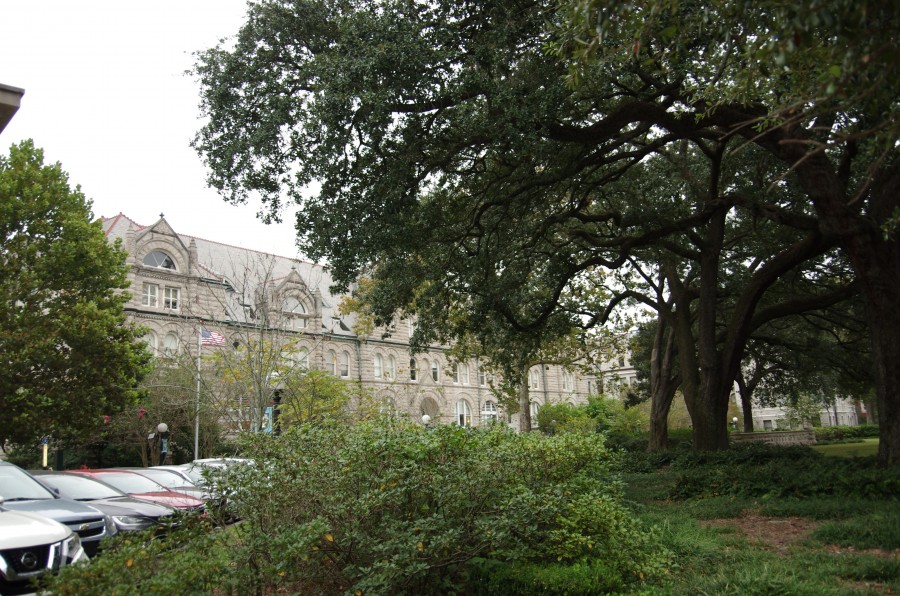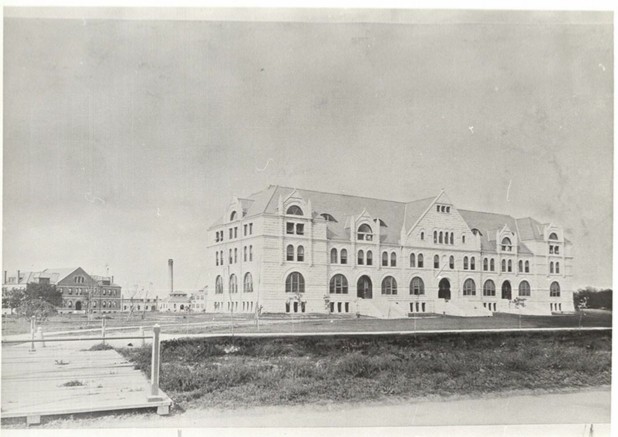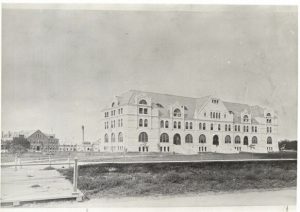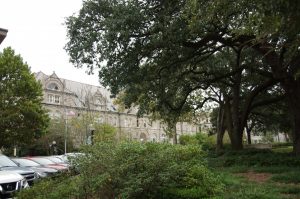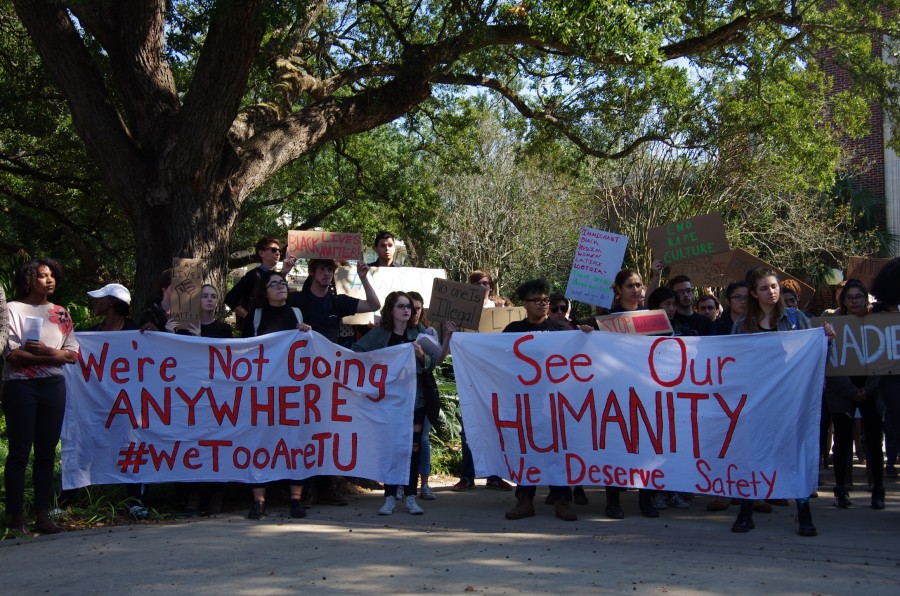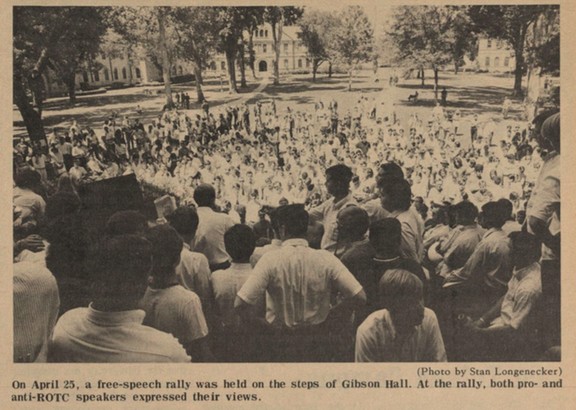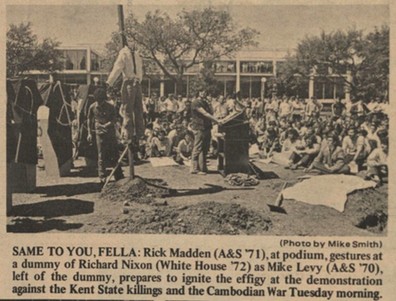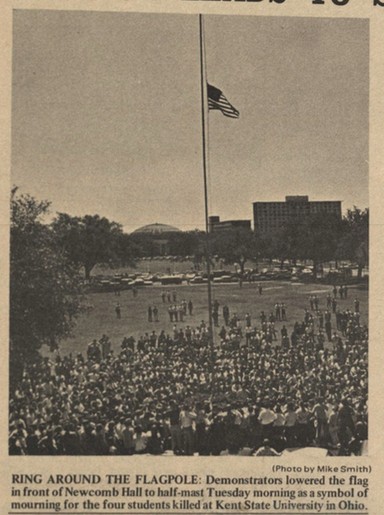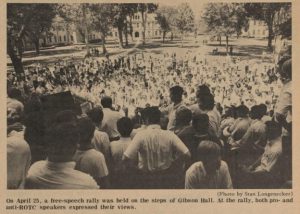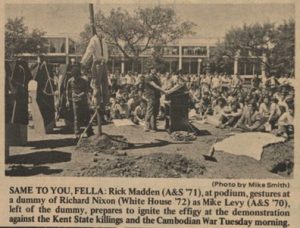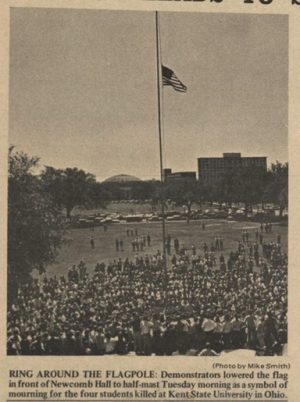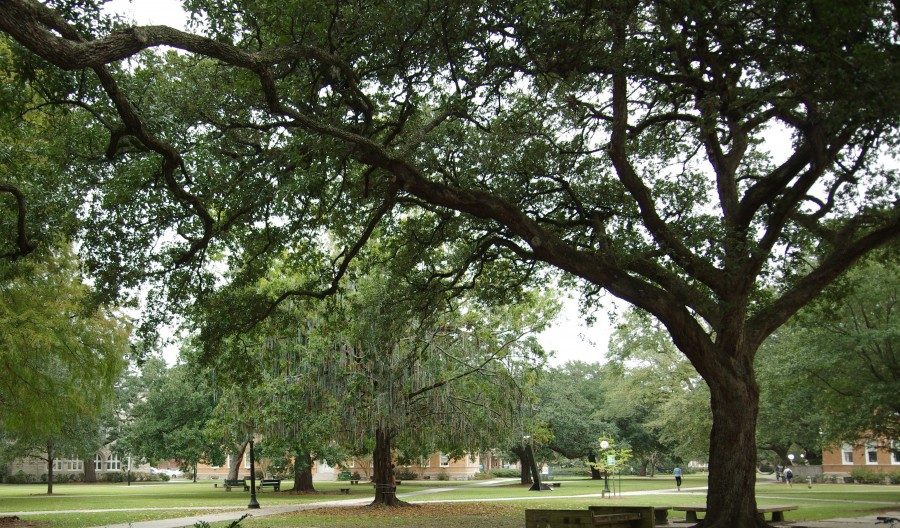
Ella Helmuth | Photo Editor
Tulane’s trees are well-rooted in the university’s past.
Uprooting tradition: Tulane cuts down historic trees
“When I initially visited Tulane, the first thing that struck me were the trees,” freshman Grace Donahue said. “I hadn’t been to any other campus that looked even remotely like Tulane’s. The trees added such an element of uniqueness. I can’t imagine this place without them.”
Donahue is not alone in her belief that Tulane’s trees are essential to the character of campus.
The university has long prided itself on the upkeep of its monumental trees, maintaining an extensive policy detailing preservation of more than 1,065 species. Its live oaks, crape myrtles and bald cypress trees are often cited as its most distinctive specimens.
The school’s devotion to its trees has not gone unnoticed. The Arbor Day Foundation has recognized the Tulane University Uptown Campus as a Tree Campus USA for the past eight years.
Tulane’s trees are known not only for their aesthetic value, but also for their history, as they can grow to be hundreds of years old. Two weeks ago, however, Tulane cut down 12 southern live oak trees that formerly lined the road and inhabited the space between the LBC and Howard Tilton Library.
From Small Seeds Grow Mighty Trees
Though the mature live oaks on campus, such as those that spread along the face of Gibson Hall, appear as looming giants, they were once no taller than students themselves. Years of growth and care have allowed Tulane’s trees to become the landmarks they are today.
When Newcomb College moved to its Broadway campus in 1918, the oak trees that are now definitive of Newcomb Quadrangle were planted with acorns from the original oak trees of the Downtown campus on Washington Avenue.
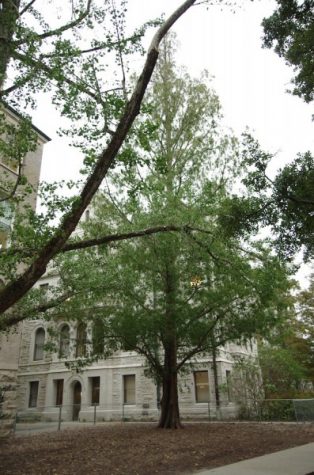
A historic metasequoia tree stands next to the School of Architecture.
From the first time they walk onto campus, students like Donahue immediately see pockets of live oaks dappling the academic quad. Tulane’s campus is now home to more than 250 live oaks.
Directly outside Richardson Memorial stands a ginkgo biloba tree that is speculated to be the oldest of its species in New Orleans. Its neighbor is a metasequoia tree whose origin can be traced back to seeds collected in China.
Next to these emblems of the past resides a tree steeped in tradition – Tulane’s beloved Bead Tree, home to Mardi Gras beads thrown by students each year.
Putting Down Roots
Tree roots spread through the soil and ground themselves in their surroundings, just as Tulane established itself in our plot of land in Uptown New Orleans. Despite difficulties, these roots have remained deeply grounded.
“I think of Tulane as a great tree, with its roots deep in the Louisiana soil and its leaves and branches spreading wide,” 1931 alumna Betty Carter said in the policy. “A tree that is growing exactly as it should and giving shelter to all sorts of people and projects of learning, big and small. A landmark for the whole South.”
Known for their durability, live oaks can live for centuries if properly maintained. Even when Hurricane Katrina hit, the majority of Tulane’s trees were left intact. Though some smaller trees didn’t weather the storm, only one live oak tree was destroyed.
Tom Armitage, former superintendent for grounds and support services, said in a 2005 New Wave article that the character of Tulane’s campus remained largely unchanged due to how minimal the damage to the trees was.
“You can’t replace a 150-year-old oak tree,” Armitage said in the article. “That was our focus.”
Tulane’s live oaks, known as a species for their size and longevity, have stood tall through major wars, protests and student exodus.
Trees line the backgrounds of the most provoking images in Tulane’s history. They grew through student protests in 1967, 1969, 1970 and, more recently, in 2016. After a 1970 all-night vigil protesting U.S. bombing of Cambodia, students lowered a campus flag and burned an effigy of then-President Richard Nixon.
The same trees that enclosed the hundreds of activists in the ’60s and ’70s grew on, and up.
Uprooting Tradition
The trees cut down two weeks ago were removed in preparation for construction on the west side of the LBC to build the Commons, a space that will provide a new dining facility, study areas and classrooms and serve as the new home of the Newcomb College Institute.
While the project will allow Tulane to grow, some have expressed concern about the sacrifices made to allow for the construction, specifically the removal of the trees.
“One of my favorite things about the Tulane campus is that we have so many trees everywhere, and so to see them being cut down, even if it’s only a few, makes me feel like a part of our campus is being destroyed,” environmental biology student Olivia Boraiko said.
Of the 12 live Oaks taken down, seven were in poor condition, having failed to thrive due to disease, or were structurally unsound after being struck by lightning.
“All of our campus trees have great value to us and are a source of pride and enjoyment,” university architect Wendy Hillis said. “In this case we had to weigh the needs of our students against the cost of a dozen trees. Tulane did not make the decision to remove these trees lightly.”
As stated in Tulane’s Tree Policy, there will be three trees planted for every one tree that is removed. Campus Planning has indicated that this policy is protocol, though it has not been stated exactly when and where these trees will be planted. Additionally, Tulane plans to compensate in another way: the trees that have been removed will be repurposed as dining tables and drink rails in the new commons.
Despite obstacles, these living historical landmarks continue to tell the stories of the university’s past.
Long after each student has passed through Tulane’s gates, trees will continue to be a deeply integrated part of the community, with roots growing far and wide.

